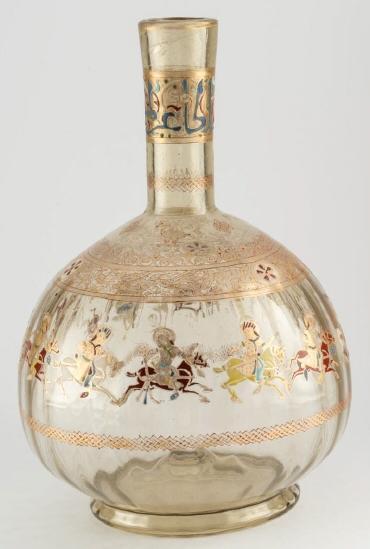Mamlūk Polo Rider Flask, c.1300AD
 A detail of the Mamlūk Polo Rider Flask, c.1300AD Another detail of the Mamlūk Polo Rider Flask, c.1300AD |
|
Polo Rider Flask Dating: C. 1300 Dynasty: Mamluks. Origin: Egypt or Syria Honey-coloured glass with red contoured red, white, yellow, green, light and dark blue enamel and gold livery Height: 28.5 cm Diameter: 19 cm Diameter: 4.3 cm margin Ident. No. I. 2573 Collection: Museum of Islamic Art Photographer: John Kramer |
